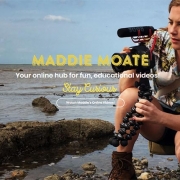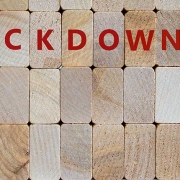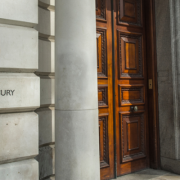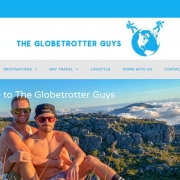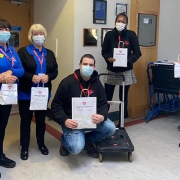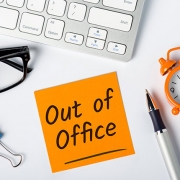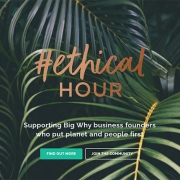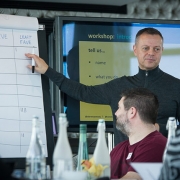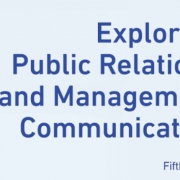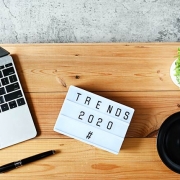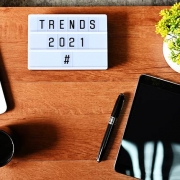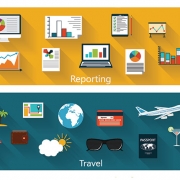2020 has been an important year for everyone in the public relations and communications industry, in ways both good and not-so-good. The pandemic and the speed of social change has forced innovation forward and made what will be lasting change to the way we work and live (just check out our predictions for the big trends for 2021).
Here, 12 PR and comms experts share the big trends of 2020, which you’ll probably recognise: lots of comms, lots of work, going fully digital and getting some long-overdue recognition – well done, everyone.
1) Comms, comms, comms
‘I think that the biggest achievement of our sector, overall, has been the immediacy and criticality of communication, especially busting the myth that there is no such thing as “overcommunicating”.’
Ella Minty, #PowerAndInfluence
‘A big challenge was the fatigue due to the ongoing need to continually deliver fast, responsive, informative, high-value communication messaging and projects as well as solutions to, ultimately, save lives, keep people well and keep services and businesses running throughout the coronavirus (COVID-19) pandemic. It wasn’t easy.
‘The second biggest challenge has been overcoming the audience’s information overload to achieve impact and not be out-communicated, cutting through the noise.’
Kerry Sheehan, CIPR
2) Work, work and more work
‘One of the biggest challenges has been managing the sheer volume of work. 2020 has brought change on a seismic scale. Whether it was the dramatic impact of lockdown on businesses in March or the overdue spotlight on racial justice in the summer, the year has been characterised by change. And whenever there’s change, PR professionals are (or at least should be) front and centre of efforts to help businesses find their feet. That’s delivered opportunity and responsibility in equal measure. But that invariably means a bigger workload – and for organisations battling against a backdrop of redundancies, that’s arguably been the biggest challenge of the year.’
Koray Camgoz, PRCA
3) We went data and digital first
‘In my opinion, the biggest achievement for the sector has been embracing innovative technologies – from digital first to data-driven and even behavioural science. At Lynn PR, we have been incredibly busy, working across a diverse portfolio – from public health and road safety to tourism and housing – and supporting teams with internal communications, transformation programmes and skills development. For me personally, seeing more clients embrace a data-led and behavioural science approach to communications has been exceptionally fulfilling. And being able to deliver tangible results at pace, even with some added time in research and testing, shows that a strategic data-driven approach can definitely support time-sensitive work.’
Shayoni Lynn, Lynn PR
4) Communicating success was as challenging as admitting to struggle
‘Focus has understandably – and rightly – often been on those businesses suffering and fighting for survival and looking to protect jobs and livelihoods. But an interesting challenge we’ve been presented with for a couple of clients has been the opposite. It’s those clients who’ve said ‘Look, we don’t want to be seen to be profiting out of a dreadful situation, but…’.
‘And that’s not about a cynical exploitation, but simply about companies with products and services that suddenly become more relevant and useful. Marketing those in an empathetic, sensitive way has also been a challenge.’
Mark Pinsent, The Hoffman Agency
5) PR got the recognition it deserved
‘The public relations sector’s biggest achievement has been a long-awaited recognition of the critical role of communications thanks to it being front and centre of the crisis response. From internal comms to stakeholder engagement, the C-Suite has finally recognised public relations as a strategic management function, not before time.’
Sarah Waddington, Astute.Work and #FuturePRoof
‘There’s been a noticeable perception shift as a result of the pandemic/crisis. Strategic communications is now more broadly recognised as a management function by senior executives – intelligent internal communications and stakeholder engagement have been core drivers of business survival.’
Michelle Goodall, Access Intelligence
‘The sector has reaffirmed its value over the course of 2020. Internal comms, for example, has proven to be critical in managing and disseminating information within businesses. We’ve also seen that the PR and marketing industries have demonstrated their versatility and adaptability in a world that went almost exclusively digital seemingly overnight.’
Julian Obubo, Manifest London
‘For the PR sector the challenges of COVID-19 and to a degree Brexit have allowed PR professionals to show their strategic worth. We have shown our crisis credentials but also our ability to shift working behaviours, reposition business and manage corporate reputation.’
Mandy Pearse, Seashell Communications and CIPR
‘The UK public sector communicators have elevated themselves, showing their worth to anyone who didn’t previously know it. There was no crisis playbook for what we were to face. Everyone has stepped up, continued to work at pace, pulled together, had each other’s back and, importantly, adopted a mind-set of what if and what next. Phenomenal!
‘For those who have criticised, I’d challenge you to spend a day in our shoes. To communicators in the public sector, I salute you!’
Kerry Sheehan
6) Catalysts of change: the pandemic and political progress
‘During the first quarter of the year, businesses where thrown back into planning and rebudgeting. And then catching up on activity and trying to keep running while suffering from zoom fatigue and cabin fever.’
Ged Carroll, Freelance Strategy Director
‘If it wasn’t for this pandemic there’s no way our A Leader Like Me programme would have existed. We’ve empowered so many womxn of colour to find their voices and step out so they can be recognised for the contributions they make within their industry.
‘Inclusion, Diversity and Equity have been spoken about for so many years in our industry but sadly that’s all it’s been – just talk. This year, for the first time, I feel like people are starting to pay attention. Driven by Black Lives Matter and sadly the tragic murder of George Floyd, organisations are finally recognising that a 20-page policy on diversity is not enough to make a tangible difference and actual action needs to take place.’
Advita Patel, CommsRebel and A Leader Like Me
7) With new problems came the old
‘Finding the right tone-of-voice to hold a conversation with stakeholders during a pandemic was one challenge this year. Then once we’d found our voice, finding the budget with which to do so.’
Scott Guthrie, influencer marketing management consultant
8) Mental wellbeing was challenged
‘Primarily keeping up with the pressure of communicating effectively while so much is happening that can have a negative impact on their mental health. Comms pros who are still working are expecting to keep fulfilling outputs and I worry that their organisations don’t always offer the right resources to support them. The CIPR issued a report this year that 8 out of 10 PR and comms pros are feeling the strain of COVID-19 on their mental health – it’s a serious challenge.’
Ronke Lawal, Ariatu Public Relations
‘For internal communicators, finally being recognised for the value we bring has been fantastic. But on the downside, many leaders have been leaning heavily on this function causing some folks to work absolutely ridiculous hours. This in itself has led to burnout and exhaustion impacting mental health and wellbeing. For some practitioners, this was the first time they’ve had to manage a crisis so it’s been a steep learning curve for them. Throw in the challenges of a remote workforce, people working sporadic hours, anxious leaders, a declining profit for some organisations, redundancies and then dealing with business-as-usual pressures – things have definitely been tough.’
Advita Patel
9) Did ‘Hands. Face. Space.’ need to be replaced?
‘UK Government was a bit of a villain of 2020 – I just don’t think there has been enough clarity of comms around the pandemic and now Brexit and the impact it will have going forward.’
Ronke Lawal
‘Communicators have known too well that the term ‘social distancing’ is wrong. What we should be practising is physical distancing while remaining socially close and for that we need to call on the skills or communicators to produce that sense of belonging through verbal and non-verbal communication.’
Scott Guthrie
10) Biggest achievement of 2020?
‘Simply keeping the wheels on the bus! And I’m genuinely only half joking. It’s been a year of survival, and I think anyone who’s managed to maintain their mental health, help those around them do the same – personally and professionally – sustain their business and remain (relatively) positive should give themselves a pat on the back.’
Mark Pinsent
‘Honestly, commercial survival is a victory.’
Ged Carroll
‘Covid has meant that some organisations have literally been fighting for their very survival. So trade and representative bodies, businesses and charities have been busier than ever talking to government, making their case. For others across public affairs, the lack of space for other policies has meant fighting hard to be heard at all.
Politicians value face-to-face engagement, as Vuelio has shown in previous research, so the absence of events in Parliament has been a problem for everyone. Zoom and Teams have stepped in but we are looking forward to attending Parliamentary receptions and events soon.’
Stuart Thomson, BDB Pitmans
‘Good news of 2020 – The vaccine is here!!’
Julian Obubo
Looking for more from 2020?
Interview on A Leader Like Me with Advita Patel
Mandy Pearse’s plans for the CIPR as president-elect
Interview with Stuart Thomson about his PR & Comms Best Influencer win at the 2020 Online Influence Awards
accessmatters session with Julian Obubo
Sarah Waddington’s #FuturePRoof Five
Kerry Sheehan’s work on AI in PR at CIPR
Spotlight on #PowerAndInfluence with Ella Minty

